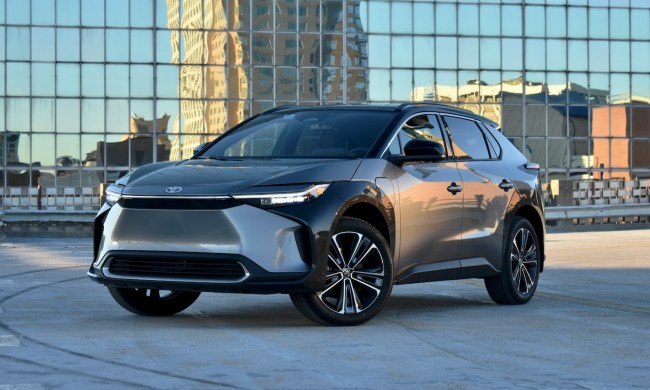The manufacturing industry is in an almost constant state of evolution. The way we make things — from cars to shoes to dental floss — has changed dramatically over the past 100 years, and the next 100 will surely be just as dramatic. So what big changes are on the horizon? What does the near future of manufacturing look like? To get a hint, we spoke with a Willem Sundblad, founder and CEO of Oden Technologies and all-around manufacturing expert. Here are three big things that he says we can expect to see in manufacturing in the coming years.
Rebuilding for resiliency
Over the past year, the manufacturing sector was rocked by a series of unexpected disruptions. The first (and most profound) was the coronavirus pandemic, which not only caused widespread factory shutdowns, but also led to a massive shift in people’s consumption patterns. This ultimately created shortages for a broad range of goods — everything from condoms to aluminum cans to computer chips. And that was just the beginning.

“COVID was one thing,” says Sundblad, “but we’ve had other disruptions as well. The ripple effects of the Suez Canal blockage are still happening, for example. Then there were the winter storms in Texas earlier this year, which knocked out the whole petrochemical feedstock industry, which goes into everything that’s made out of plastic, which is a lot of stuff.”
Taken as a whole, these events have laid bare the fragility of global supply chains. We’ve now seen direct evidence of how a seemingly small and isolated incident can create a ripple effect that brings an entire industry to a grinding halt — and Sundblad suggests that the past year has made manufacturers acutely aware of that vulnerability. Over the next few years, he expects that many will make moves to restructure their operations so they can be more resilient in the face of disruption.
“What you really want to do,” says Sundblad “is foster a better ecosystem in the U.S., with closer links between customers and suppliers so that you can handle disruptions in a much better way and actually have an ecosystem that is closer to you so that you don’t have to ship everything from China.”
Weathering workforce shortages
As if volatile supply chains weren’t challenging enough, Sundblad also anticipates that the manufacturing sector will face increasing shortages in workers over the next few years. Why? To put it simply, more people are retiring from manufacturing jobs than are entering the field.
“This has actually been the discussion in manufacturing for years,” says Sundblad, “because you have an older workforce that is retiring with a lot of domain knowledge. Then on top of that, there’s just not enough young people who want to go into manufacturing.”

Sundblad suggests the latter is less an issue of job availability than it is one of job attractiveness. There are plenty of manufacturing jobs out there, but working in a factory and making parts just isn’t as enticing as working for a trendy Silicon Valley software startup that has a ping-pong table in the break room and free kombucha on tap.
“If you want to attract young people into manufacturing,” Sundblad says, “you have to make it something that’s really compelling. And that means offering new digital tools, making really cool things that truly have an impact, and giving people a chance to see the the fruits of their labor. I think these are things that young people really want.”
Tech to the rescue?
It’s not all doom and gloom, though. Despite the challenges that the manufacturing industry is currently facing (and will face in the coming years), Sundblad remains optimistic. With the right technology deployments, he thinks it’s entirely possible to alleviate some of the industry’s looming problems.

“COVID was a massive catalyst of new technology being adopted in manufacturing,” he explains. “For example, augmented reality was a nice, shiny toy before COVID. It was one of those things that was nice to have, but not essential — so nobody actually used it. But then, when people suddenly couldn’t travel to factories and we had to minimize the amount of people that could work on factory floors, AR was a huge asset. With the right tech, operators on the factory floor could get real-time guidance from technicians, and actually solve problems faster.”
Sundblad says manufacturers are also rapidly adopting technologies like machine learning, A.I., and industrial IoT (Internet of Things) — and not just so they can replace factory workers, either. Instead, these systems are often meant to aid human laborers and make certain jobs easier to perform.
“These tools allow manufacturers to really analyze and optimize how they’re making their things,” he says. “If you do that, you can make things faster, you can make things more efficiently, and you can save both materials and energy. It’s a sustainability boost for everyone.”
So while technology certainly won’t solve all the world’s manufacturing woes, there’s good reason to believe it could help manufacturers become more stable, resilient, and efficient than ever before.



